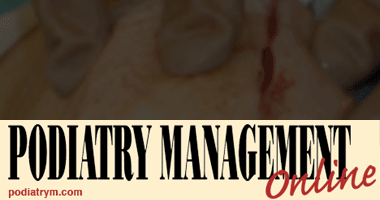
Tag: James McGuire


The Evolution of Platelet-Based Wound Therapy
Shivani J. Patel, BS Khurram Khan, DPM, FACFAS, FACPM James McGuire, PT, DPM, CPed, FAPWHc
The Biomechanics of Diabetic Foot Amputation
According to the International Diabetes Federation, approximately 463 million adults live with diabetes mellitus (DM), a number projected to increase to 700 million by 2045; a diabetic foot ulcer (DFU) will occur in about 15% of that population. Multiple factors contribute to the development of those wounds including diabetic peripheral neuropathy, biomechanical imbalances, trauma, and peripheral vascular disease. In addition, 85% of all lower limb amputations in patients with diabetes are preceded by a DFU resulting in significant biomechanical challenges for these patients, many of who never become ambulatory again. Prior to surgical intervention, patients come with inherited and acquired biomechanical imbalances or weaknesses such as equinus, severe pronation/supination, mid and forefoot deformities, and muscle weakness unrelated to their other diseases. Surgeons may not take these into consideration when making decisions about amputation level … read more
Combating Biofilms In The Chronic Wound
Given the complexity of biofilm in lower extremity wounds, these authors offer a closer look on how biofilm develops, keys to eradicating biofilm and emerging modalities that may have an impact in the future.
We all encounter biofilms on a regular basis in our practices. A biofilm is a complex polymicrobal community of bacteria and fungi that develops on foreign materials, necrotic debris, exposed bone, and within the bed of chronic wounds. When James and colleagues examined the biopsies of 50 chronic wound beds, 60 percent contained a biofilm.
Planktonic or free-floating bacteria are more aggressive and divide more rapidly. Changes in gene expression allow them to secrete hydrolase enzymes and exotoxins, resulting in more rapid local tissue invasion. As a bacterial colony develops, environmental stimuli induce the cells to engage in quorum sensing, a gradient-based recruitment strategy used to summon additional bacteria to the developing biofilm and alter the phenotypic expression of bacteria within the community. Free-floating planktonic bacteria adhere to the wound bed using very weak molecular interactions … read more
Reexamining The Gold Standard For Offloading Of DFUs
Although the total contact cast can be effective for offloading diabetic foot ulcers, it is not in wide usage. These authors assert the gold standard for offloading lies in the non-removability of the device and offer a closer look at the merits of transitional offloading.
According to the American Diabetes Association, there are approximately 29.1 million Americans, or 9.3 percent of the population, who suffer from diabetes.1 Twenty-one million of these people have already been diagnosed with the disease and 8.1 million remain undiagnosed.
This number, although large, pales in comparison with the 86 million Americans who have been classified as “pre-diabetic” and who are at risk of having diabetes in the near future.1 Each year, 1.7 million Americans 20 years of age or older add to this number. This amounts to 4,660 people per day or one new patient with diabetes every 19 seconds. A full 25.9 percent of Americans age 65 or older suffer from diabetes and its complications. Almost twice as many American Indians (15.9 percent) and African-Americans (13.2 percent) develop the disease as Caucasians (7.6 percent) with Hispanics close behind (12.8 percent). Asian-Americans are not spared as 9 percent of this population will develop the disease and its many complications.
Glycosylation affects all organ systems and leads to complications such as dyslipidemia with an increased incidence of hypertension, and systemic vascular disease. It also leads to the development of a progressive ascending peripheral neuropathy with a loss of sensation and sweat gland function. This in turn leads to ulceration and, in some cases, amputation when infection of the wounds goes unchecked by an immune system that is also compromised by the process …
read more